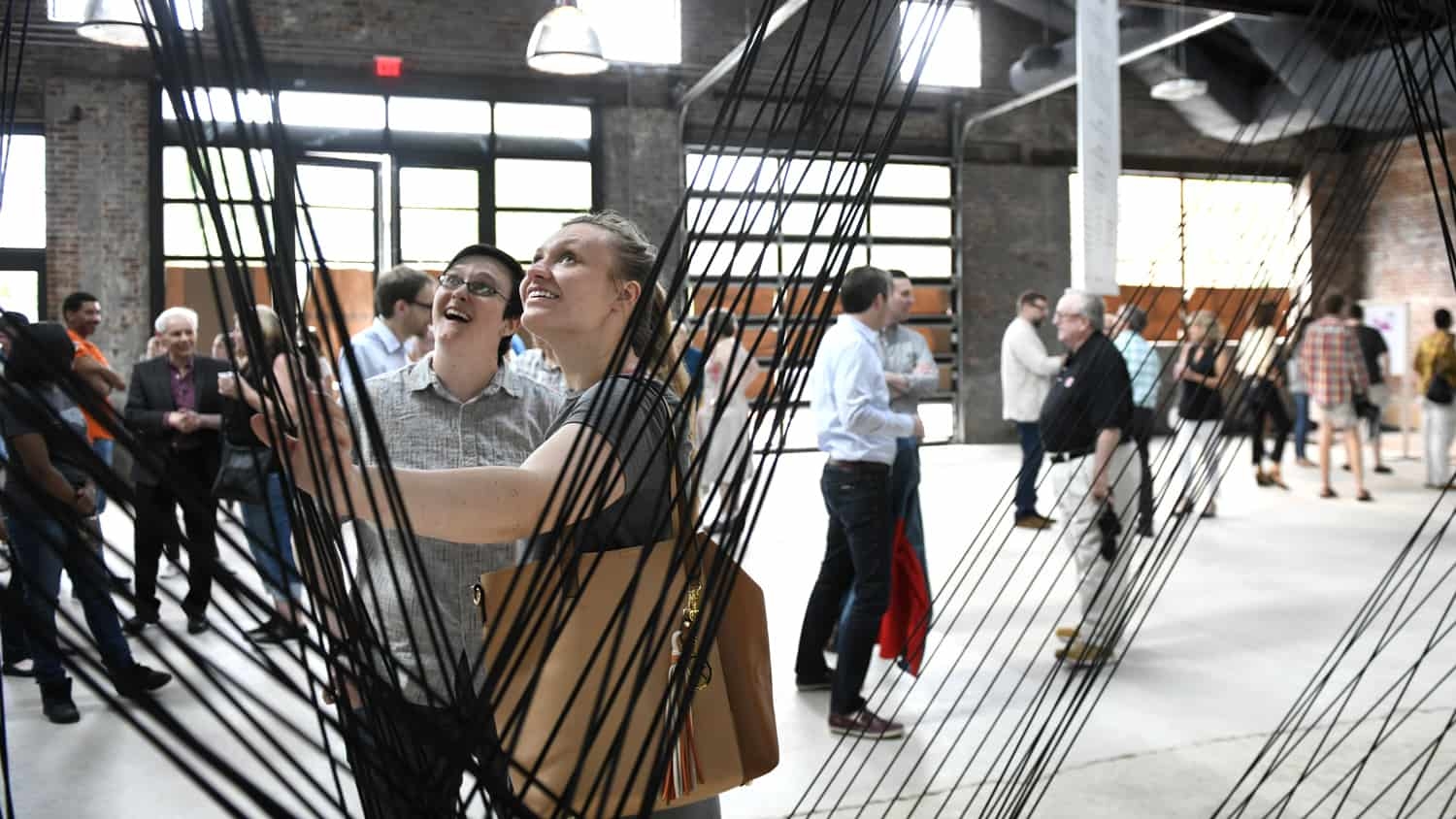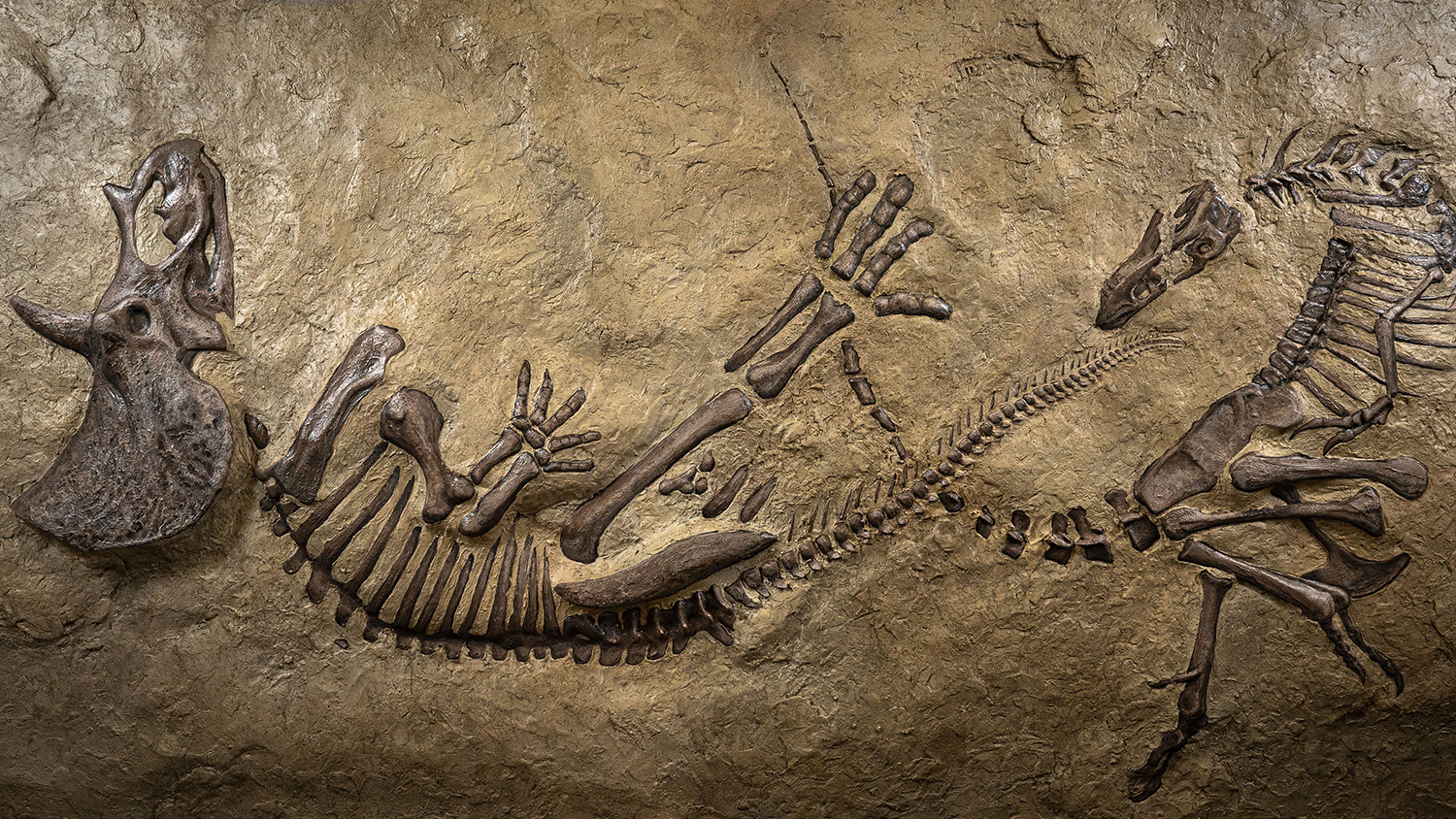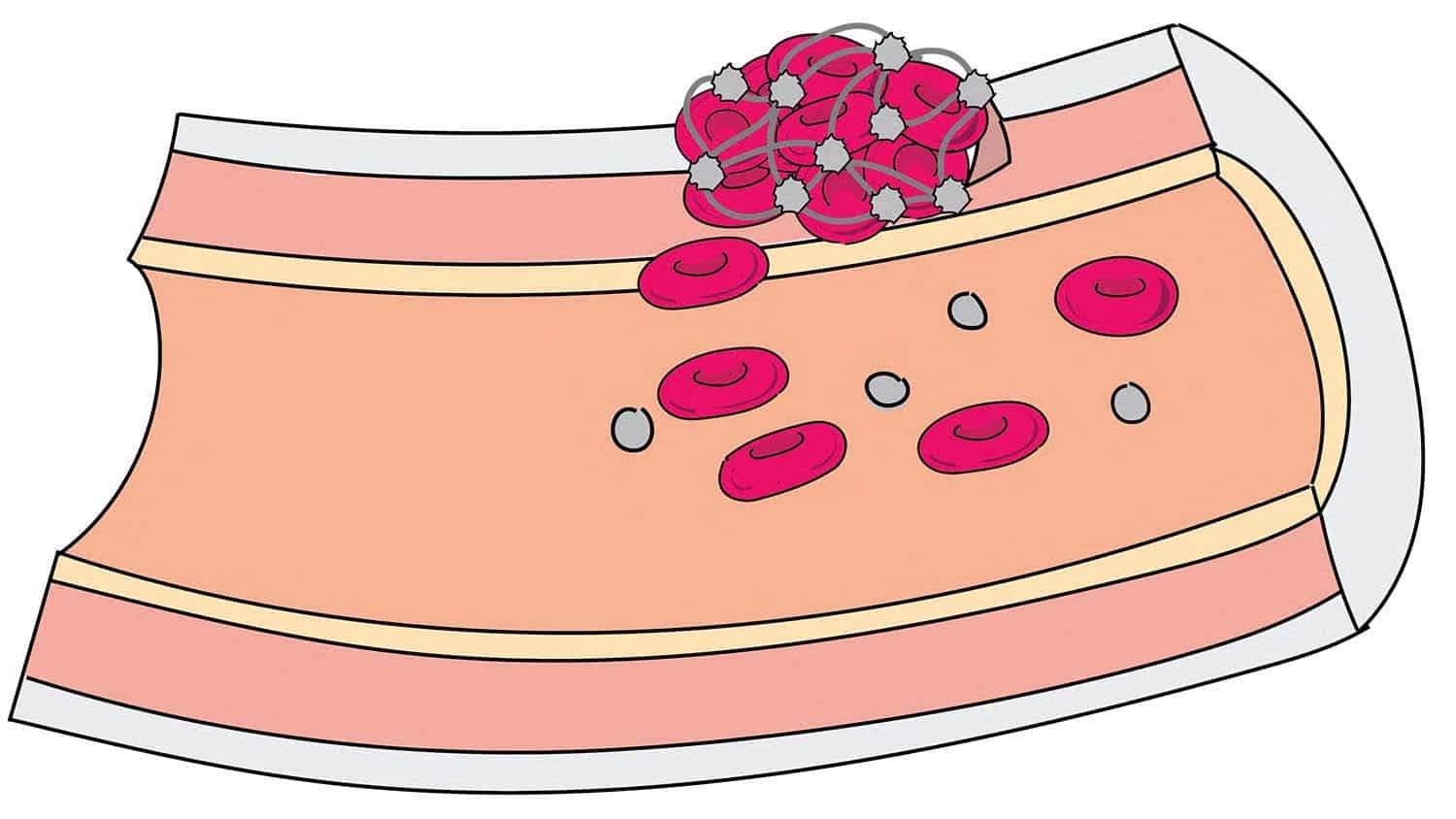Bringing Invisible Worlds to Light

When you walk into a downtown Raleigh food hall, you might expect to see vendors serving hungry foodies. You probably wouldn’t expect to see large, interactive art installations — or chemists, physicists, biologists and mathematicians explaining them alongside their designers.
But the latter was the scene on a May evening at a preview of NC State’s “Invisible Worlds: Bringing the Unseen Into Focus” exhibit in downtown Raleigh, which is open Thursdays through Saturdays through June 30. Hundreds of attendees roamed Raleigh’s new Transfer Co. Food Hall, pushing and pulling on mazes of elastic cords, playing digital games and walking through tunnels of light — all in the name of learning new things about science.
These installations were the product of a semester-long collaboration between faculty and students in the College of Sciences and College of Design, developed to help the public understand scientific research in new ways. But members of the public weren’t the only ones who learned from it. Along the way, the collaborations encouraged everyone involved to step across disciplinary boundaries and look at their work in new ways.
Telling Stories Together
The Invisible Worlds exhibit was born from an idea by New York-based scientist-turned-designer Amanda Phingbodhipakkiya that grew into an organization called The Leading Strand. Her vision is to make complex scientific concepts more accessible to laypeople by pairing scientists and designers to tell the story of the scientists’ research.

Phingbodhipakkiya selected NC State for the second cohort of The Leading Strand after being impressed with her experience during a visit to campus last year to deliver a talk on her work.
“NC State is the perfect place to run a cohort of The Leading Strand,” she said. “I’ve actually never seen another university invest so much in communicating science to the general public and shoring up initiatives that really try to invite the public to engage with science.”
Phingbodhipakkiya reviewed applications from science and design faculty and formed pairs based on the visual medium that might best represent each scientist’s work. The result was six teams of faculty and students that began their collaborations in early 2018. The topics and team leaders were:
- Force networks: Karen Daniels, Physics, and Sara Queen, Architecture
- Ultrafast quantum matter: Lex Kemper, Physics, and Victoria Chi, Graphic Design
- Dark matter: Katie Mack, Physics, and Tania Allen, Art + Design
- Aye-aye behavior and vocalizations: Lisa Paciulli, Biological Sciences, and Emil Polyak, Art + Design
- Optimization for radiotherapy: David Papp, Mathematics, and Emil Polyak, Art + Design
- Synthetic antibiotics: Gavin Williams, Chemistry, and Pat Fitzgerald and Lee Cherry, Art + Design
Each team was tasked with producing a physical or digital installation that could help the public interact with the scientist’s research. Explore these installations in the videos below.
More Alike Than Different
The lead design and science faculty, along with their teams of students, met regularly throughout the spring semester to flesh out their concepts. Phingbodhipakkiya spent the spring as a visiting faculty member in the College of Design and offered biweekly check-ins, demo days and regular reviews to help each team hone their concepts.
The first challenge for each team was getting on the same page about the scientific concepts they were presenting. Sara Queen, associate professor of architecture, already had a frame of reference for the science behind her team’s project. She and her students worked with Karen Daniels, a physicist who studies packing and force transfer in granular materials. These concepts underlie decisions architects must make about structures based on the type of soil they’re building on.
Assistant professor of physics Lex Kemper, whose work deals with manipulating time to observe condensed matter and other phenomena, used visual and experiential reference points to introduce his design partners to his work. He also brought the designers into physics labs to help give them a clearer idea of what physics research involves.
Talking and listening were a key part of the process, said Lisa Paciulli, lecturer in biological sciences. “Emil Polyak [her design collaborator] and his team came in with an idea, but they listened to us,” she said. “There was a lot of teamwork to bring our project to fruition, and I couldn’t be happier with our collaboration.”
The scientists and designers became more familiar with each other’s work through the collaborative process. In doing so, they noticed that they weren’t actually that far apart.
“I don’t think you can do science without design,” Kemper said. “After we’ve done our science, a big part of our job is figuring out how to present it to other scientists, funding agencies and the public. In a sense, that involves design.”
“It’s crazy that some people think science isn’t creative,” said senior design student Julia Paret, a member of the ultrafast quantum matter team. “Knowing how to ask the right questions in science is a form of creativity too.”
Immersive Experiences
While each team worked through iterations of their final concepts, Phingbodhipakkiya and Mira Abed, the College of Sciences public science liaison, worked to find the perfect space to bring the exhibit into the public sphere. They found it in the new Transfer Co. Food Hall, a converted warehouse space that will house a range of popular Raleigh food vendors.
Creating an interactive experience that’s both fun and educational was especially important because the unconventional venue offers a chance to attract visitors who don’t normally go to art or science museums.

At the event, attendees said they appreciated this chance to experience something new.
“This exhibit shows that science is for everybody and science can be fun,” said attendee Alejandra Oyarzun. “It’s so nice to see how excited and happy the scientists are about their work, and I think that’s an important message to give.”
“It’s been really awesome to see my research turned into this video game and see people enjoying and learning from it. I didn’t even think that was possible,” said Rachael Hall, a graduate student on the synthetic antibiotics team. “I hope people take away a little bit about how a scientist would work to do this type of science.”
Kemper emphasized the participants’ hope that the exhibit will inspire attendees to think differently about science. “I hope the people who see this come away with the desire to learn something more and look at the world around them with different eyes,” he said.
This post was originally published in College of Sciences News.


